Excerpts from Jim Conrad's
Naturalist Newsletter
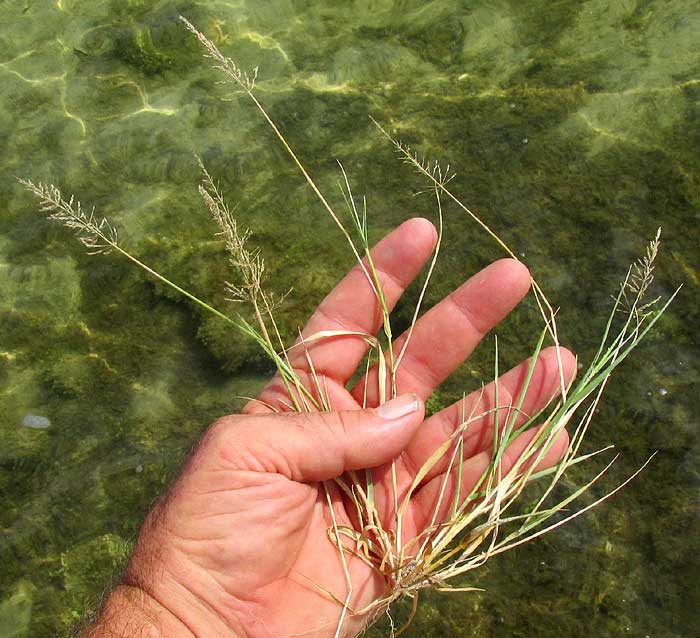
from the May 31, 2015 Newsletter issued from Río Lagartos, on the Yucatan Peninsula's northern coast (~N21.60°, ~W88.16°), Yucatán state, MÉXICO
DROPSEED GRASS
Beside Río Lagartos's storm wall, along the pretty, windswept, sun-baked Malecón, sand had piled up along the curb and a certain small, wiry grass somehow not only was living in it, but flowering. It was an environment as dry, salty, and inhospitable as you ever meet, and I wondered how any plant could live in it. It's shown below:
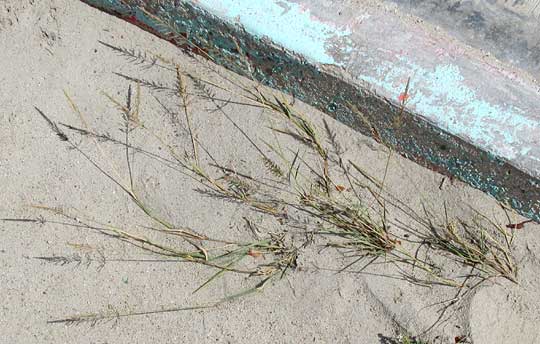
When I tugged at a leaf, the whole plant popped out of the sand as if its roots penetrated nothing more substantial than the sand itself. At the top of this page you can see the whole plant's general form, shown against the estuary's waters just beyond the storm wall.
That picture shows that the grass's blades cluster toward the stems' bases and that flowers are held in narrow, panicle-type inflorescences. Notice a feature that later was important during the identification process, that even though the panicles spread open at their bases they stay closed, or "compacted," at their tips. Another good field mark is shown below:
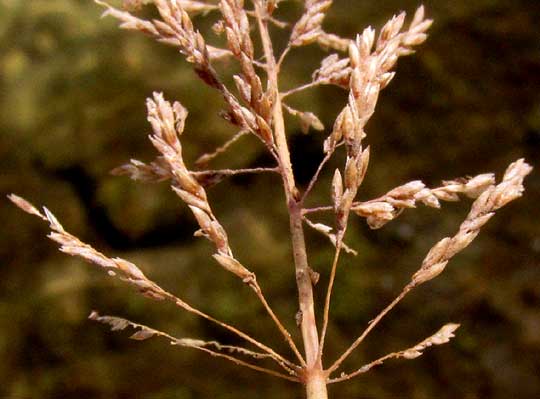
That shows the lowest secondary branches arising from the inflorescence's main stem, or rachis, in a whorl. It's slightly unusual to have so many branches. A close-up of a cluster of individual spikelets is shown below:
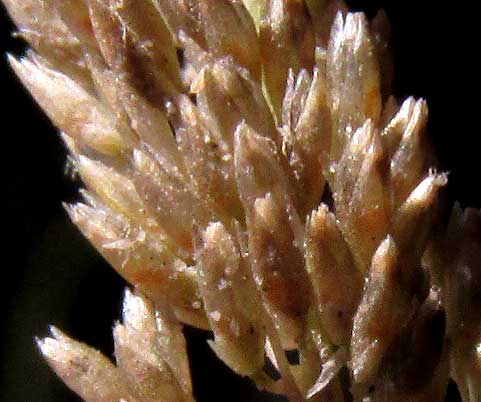
Here we can see that each spikelet, which is uncommonly small, contains a single floret, and that there are no needle-like appendages and no hairiness.
We've seen grasses structured like this before, usually in species of the big genera Sporobolus and Muhlenbergia. A difference between these two common genera is that the ligule -- the tiny, wall-like thing often occurring between a grass's blade and its stem -- is composed of tiny hairs, or cilia, in Sporobolus, but is "membranous," or like cellophane, in Muhlenbergia. Below, you can see this plant's ligule at the base of one of its salt-speckled blades:
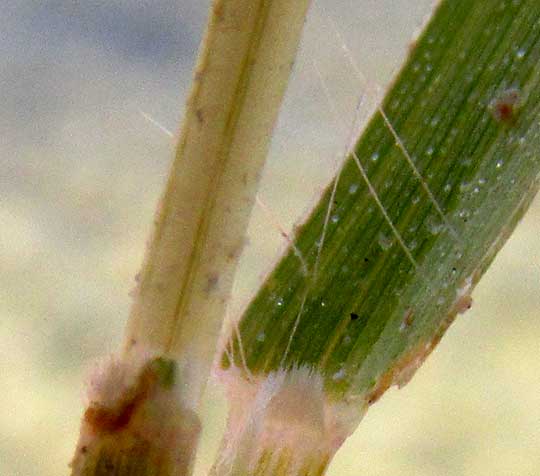
Our grass's ligule is composed of tiny, white, sharp hairs, so at this point I began thinking we might have a Sporobolus, species of which commonly occur worldwide, and often are known as dropseeds.
Our plant is SPOROBOLUS PYRAMIDATUS, whose most common English names seem to be Whorled Dropseed and Madagascar Dropseed. The "whorled" in the first name relates to the whorl of secondary inflorescence branches shown above, and the "Madagascar" in the second name is inappropriate, since the species is native from Kansas and Colorado south through the Americas to southern South America. It is indeed invading other parts of the world, however, because it's such a tough survivor. Frequently it occurs in sandy, salty, human-disturbed environments exactly like where we found it.
As global warming takes out the Earth's organisms adapted for moderate and stable ecological niches, it's good to pay attention to these beings who survive in extreme, unstable environments. Eventually they may become the planet's dominant life forms.